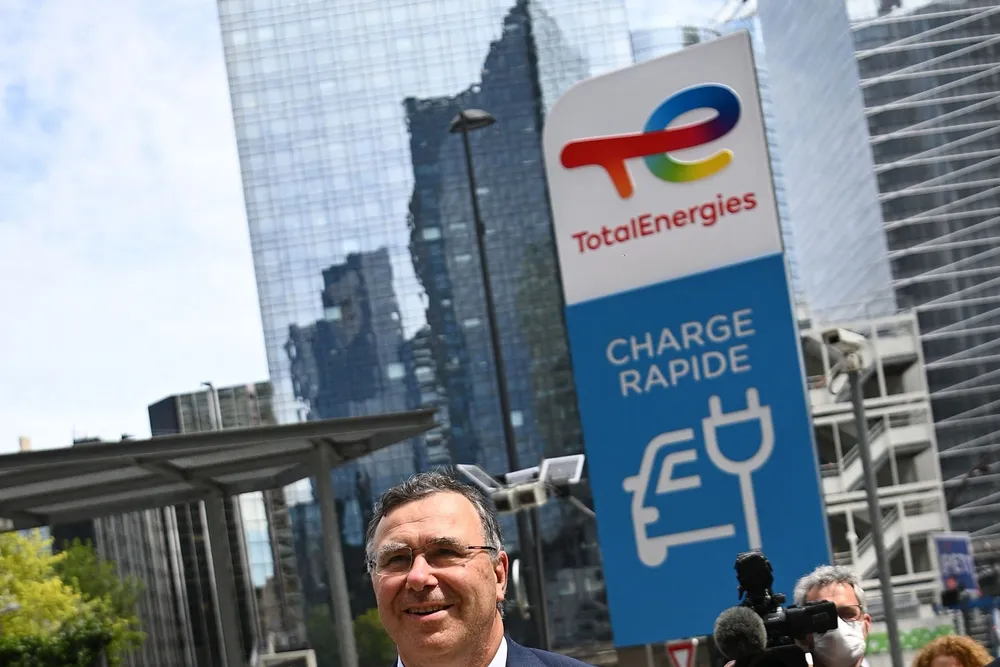TotalEnergies wanted to be a 'green major': here's how it's going
ANALYSIS | Market experts give verdict on progress towards 2021's goal as oil giant prepares to cut investment and 'clean the pipeline' in wind and solar power

Cast your mind back to 2021 when 'energy transition' was the phrase on everyone’s lips, Russia was yet to invade Ukraine and Europe’s three oil ‘supermajors’ couldn’t stop talking about renewables.
At BP, Murray Auchincloss – at that stage finance chief to CEO Bernard Looney – told investors that upstream “now means a wind farm, not an oil field”. At Shell, former Orsted high-flyer Thomas Brostrom started work to lead an ambitious renewable energy expansion.
That was the prelude to a multi-year global acquisition and investment spree that saw the French group amass a sprawling project portfolio of 97GW by the end of 2024, 26GW of which was installed.
With some exceptions – India and South Africa were mentioned – it will look to dispose of assets elsewhere in what Pouyanne described as a process of “cleaning the pipeline”.
“It is not a priority of the company to be a pure renewable developer,” the CEO stressed.
Is TotalEnergies rowing back from its “green major” ambitions, in the same way fellow 2021 green enthusiasts Shell and BP have already publicly pivoted back to fossil fuels under pressure from investors? (Brostrom moved on in 2023 and Auchincloss now admits BP “moved too far, too fast”).
In TotalEnergies' case the reality is more nuanced, say analysts.
It is true that the 2025 iteration of 2021’s 100GW gross renewable energy target – renamed gross power capacity – does now include an element of gas power as well as batteries, as around 20% of the total becomes ‘flexible’ capacity.
Pouyanne claims TotalEnergies needs gas and battery storage as well as variable renewables to operate in increasingly complex markets and fulfil the power purchase agreements that are key to its plans, and they are likely to be the focus of any further investment.
On the other hand, the share of renewables in the 100-120TWh that TotalEnergies expects to be producing by the end of the decade remains unchanged at 70%.
Power production is expected to keep climbing to up to 150TWh by 2035 as the oil giant develops that renewable energy pipeline – a figure that compares with the current output of global green power frontrunners such as Iberdrola and Enel.
Making a decent return from renewables and power
“I think they've got to a point where they realise there's a need to rationalise the portfolio and trim it back more to focus on those key deregulated markets that are going to fuel that integrated power strategy.”
Integrated power, explained Ellacott, is how TotalEnergies expects to achieve something that other oil & gas players, or at least some of their shareholders, have despaired of – making a decent return from power and renewables.
The integrated power operation already delivering a 10% return on average capital employed (ROACE) on its way to its target of 12% “That's equivalent to what they generate in oil at $60 a barrel. It is this integrated approach that they've really wrapped it up in this business unit, and [is providing] lots of help driving that double-digit ROACE. But it's also generating pretty meaningful operating cash flow already.”
Definitely an offshore wind major
Bahzad Ayoub, offshore wind manager at Westwood Global Energy Group, said TotalEnergies already has a strong claim to top-table renewable status, especially in wind at sea.
Westwood GEG forecasts currently show TotalEnergies ranking second behind only RWE on total offshore wind capacity expected to reach a final investment decision between 2026 and 2030, globally excluding China.
“They’ve got a lot of projects upcoming and we’ve seen their involvement in a lot of recent leases,” notably the award of a major French project in late September.
Ayoub pointed out that TotalEnergies has also kept its renewables development push inside the main business while entering partnerships at project level, in contrast to BP, which has moved offshore wind into a joint venture with Japan’s JERA.
Like most other offshore wind developers, however, TotalEnergies is focusing more on near-term opportunities in its existing pipeline and less on emerging markets, Ayoub added.
“They positioned hydrogen as one of the pillars that they wanted to focus on as a part of their strategy. Given the challenges that all companies have faced across the value chain in this market it's definitely more about being selective [in projects] and selective scaling.”
The conclusion seems to be that while it has adapted to market changes along the way, TotalEnergies is still on course to be a renewables big-hitter and the French giant sees no reason why it can't play an important role in meeting growing demand from EVs, industries, data centres and the other drivers of electrification.
Indeed, Wood Mackenzie's Ellacott reckons that TotalEnergies, along with Italy's Eni, are the two major oil players that “really stand out in having pretty much stuck to their strategies [on green energy] albeit with some adjustments”.
For the record, it is also important to note that whatever the merits of TotalEnergies as a green energy major, it remains very firmly a fossil supermajor. The latest guidance for annual Capex in its low-carbon operations is $4bn, with oil & gas set for $11bn.
(Copyright)